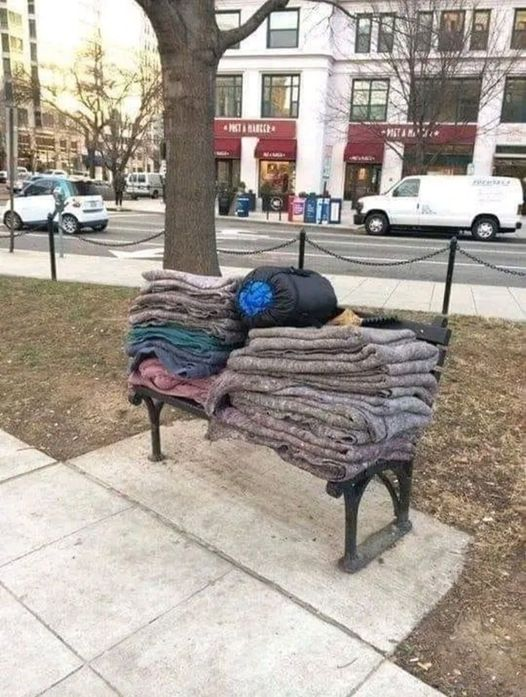The day began with a gray, unforgiving sky that wept a cold, persistent drizzle onto the city streets. It was on a forgotten patch of grass, tucked away behind a bustling thoroughfare, that the discovery was made. It was a scene that could easily be missed by the hurried passerby, but for the one who stopped, it was impossible to ignore. A heap of blankets, once likely a source of comfort, lay in a sad, disheveled pile. They were filthy, partially soaked through from the relentless dampness, and bore the unmistakable signs of a difficult existence.
Among the blankets were the small, scattered remnants of a life lived on the fringes: a worn-out backpack, a single, water-logged shoe, and an empty cup. Each item was a quiet testament to the person who had sought refuge there. The initial feeling was a punch to the gut—a mix of profound sadness and a sense of helplessness. Who did this belong to? Where had they gone? Were they seeking shelter from the rain, or had they been forced to leave their only possessions behind?
For a moment, the observer stood there, frozen by the bleakness of the scene. It would have been easy to walk away, to push the unsettling image from their mind. But then, a different feeling began to take root: a firm resolve. This wasn’t just a mess to be cleaned up; it was the story of a human being in need. A quick photo was taken, not for pity, but for purpose.

A call for help was sent out, not with a loud siren, but with a quiet, heartfelt post online. The image was shared with a simple, powerful message: “I saw this today. This is the sign of someone’s suffering. Let’s show them it is also a sign of a community’s compassion.”
The response was nothing short of miraculous. It started as a trickle and quickly became a flood. The post was shared dozens, then hundreds of times. But more importantly, people didn’t just ‘like’ the post; they acted. A local mother was the first to respond, offering a set of clean, warm blankets and new socks. Soon after, a retired veteran organized a small collection among his neighbors for non-perishable food items and toiletries.
Throughout the day, a steady stream of people arrived. They didn’t come to stare; they came to give. They brought bags filled with not just necessities, but with thoughtful comforts: hand warmers, new gloves, waterproof tarps, and even a few books. A local cafe owner dropped off a box of hot coffee and sandwiches, hoping the person might return. Each donation was left neatly and respectfully, transforming the area of despair into a sanctuary of hope.
By evening, the scene was unrecognizable. The filthy, wet pile was gone. In its place stood a carefully arranged collection of life-affirming supplies. The damp blankets had been replaced by a stack of clean, dry, neatly folded ones. Next to them were organized bags of food, warm clothing, and personal hygiene kits. The single, water-logged shoe was gone, replaced by a new pair of sturdy boots. What was once a symbol of suffering had been transformed into an undeniable beacon of community love and support.
This story is about more than just blankets. It’s about the refusal to accept suffering as a normal part of the landscape. It’s a powerful demonstration that behind every social media share, there can be a real, tangible action. It highlights a community’s collective ability to see an individual in need and respond with overwhelming kindness and dignity. We may never know the name of the person whose life was touched by this act, but the message sent by the community is loud and clear: You are not forgotten. You are seen. And we care.